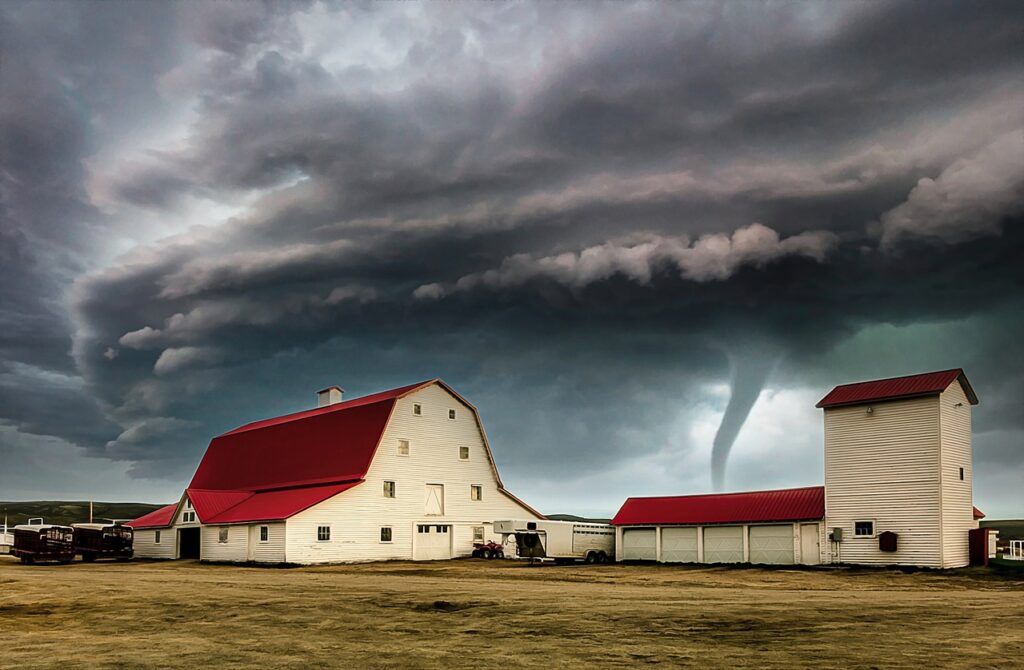The Biggest Cause of Homeowners Insurance Losses
We will search the top carriers for you for the best offer.
The Biggest Cause of Homeowners Insurance Losses
When it comes to protecting your home, understanding the most common and costly causes of insurance claims is essential. Knowing what insurers see as high-risk can help you avoid preventable damage, lower your premiums, and ensure you’re fully protected.
1. Wind and Hail Damage: The Leading Cause
Wind and hail are responsible for the largest share of homeowners insurance losses, accounting for over one-third of all claims in the U.S. These weather events include tornadoes, hurricanes, and severe storms—especially common in states like Texas, Florida, and throughout the Midwest.
Frequent storms and expanding residential construction in high-risk zones have driven up both claim frequency and severity, leading to rising premiums and stricter underwriting from many insurance companies.
2. Water Damage and Freezing Pipes
Water damage is another major cause of loss, making up about a quarter of all homeowners claims. Common culprits include:
Burst or frozen pipes
Leaky roofs
Malfunctioning appliances (like water heaters or dishwashers)
Cold climates pose a special risk for pipe freezing and bursting. Regular home maintenance and winter-proofing can help avoid thousands in potential repair costs.
3. Fire and Lightning: High Severity, Lower Frequency
Although less common, fires and lightning strikes are responsible for some of the most expensive claims. Fires can result in partial or total home loss, and lightning can damage electrical systems, appliances, and roofs. These claims often carry high payouts and longer recovery times.
Other Causes: Theft, Vandalism, and Liability
Other types of claims—like theft, vandalism, injuries on your property, and minor structural damage—represent a smaller portion of overall losses but still matter. Even a single liability claim or lawsuit can exceed basic policy limits if you’re not properly covered.
Why Are Insurance Losses Increasing?
More severe weather: Climate patterns are causing stronger and more frequent storms.
Rising construction costs: Labor and material prices are up, making even small repairs expensive.
Homes in high-risk areas: More people are living in regions prone to wind, floods, and wildfires.
Together, these factors are causing insurers to reevaluate pricing and reduce coverage options in vulnerable zones.
How You Can Protect Your Home
Stormproof your home – Reinforced roofing, hurricane shutters, and proper drainage can prevent costly wind and hail damage.
Prevent water damage – Insulate pipes, maintain your roof, and install smart water sensors near appliances.
Update your policy annually – Ensure your coverage reflects current rebuild costs, especially with inflation and material shortages.
Consider extended coverages – Add flood or earthquake endorsements if needed.
Improve home security – Security systems and cameras can deter theft and qualify for discounts.
Final Thoughts
Wind and hail remain the top causes of homeowners insurance claims, followed closely by water damage and fire. By understanding these risks and taking proactive steps to secure your home, you can lower your exposure, avoid rate hikes, and ensure fast recovery after a loss.
Not sure if your current homeowners policy offers enough protection?
With 30+ years of experience, THAgency helps homeowners identify gaps, compare top carriers, and build custom policies that fit your property and your budget. Fill out the form below to get your personalized quote today. It’s fast, secure, and tailored to your needs.
Homeowners Insurance

Related Posts
Get a Right Insurance For You
SHARE THIS ARTICLE
We will compare quotes from trusted carriers for you and provide you with the best offer.
Protecting your future with us
Whatever your needs, give us a call, have you been told you can’t insure your risk, been turned down, or simply unhappy with your current insurance? Since 1995 we’ve been providing coverage to our customers, and helping people across United States.












